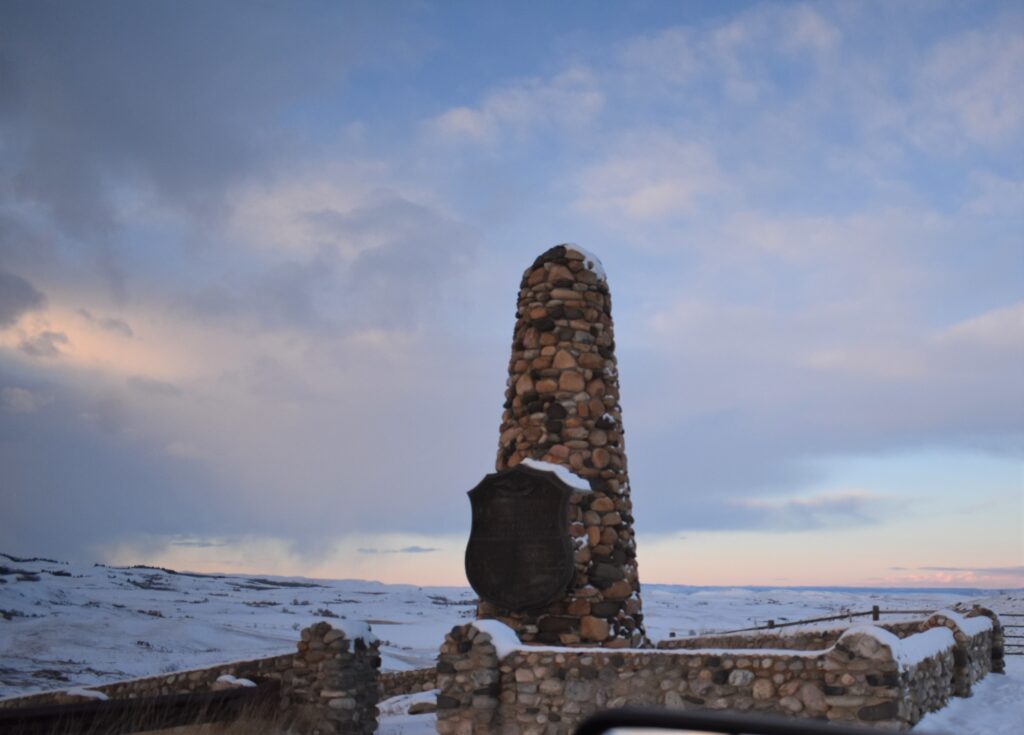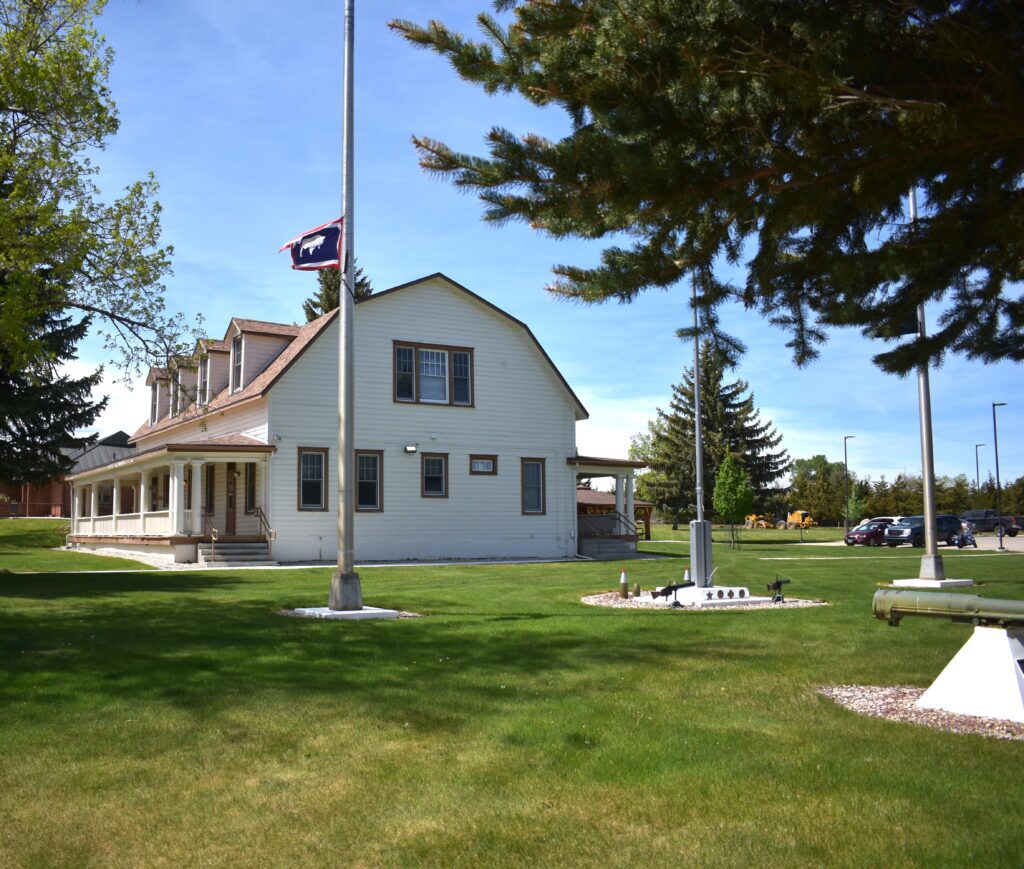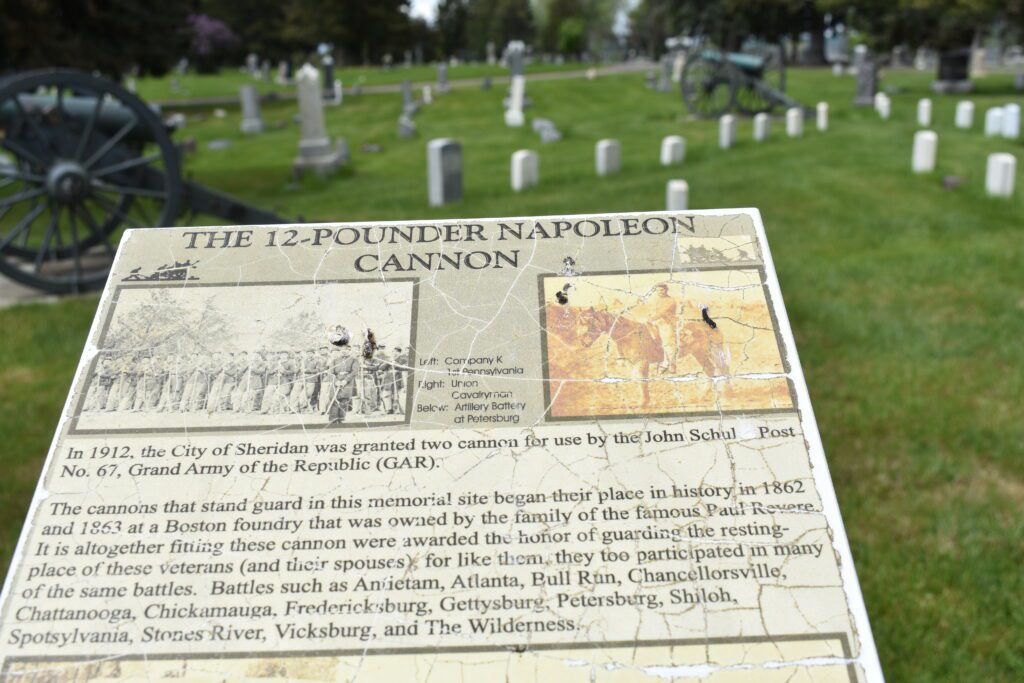News
History: How the Civil War Contributed to Sheridan’s History

In April of 1865, the American Civil War ended when General Lee of the Confederate Army surrendered to General Grant of the Union Army. Although the Civil War was fought thousands of miles away from Sheridan, Wyoming, the war made an impact on our history.
Even the name “Sheridan” was to honor Phil Sheridan, Union General in the Civil War.
When the war ended, there was a push west, with people leaving the war-torn South for greener pastures and western gold. Four years after the war ended, on May 10, 1869, the transcontinental railroad was completed, making it easier to travel from coast to coast.

Along with the influx of white settlers crossing and settling Indian lands, came conflicts between the two cultures. Forts were set up along westward trails, such as the Oregon and the Bozemen, while the railroad was being completed. Armies were moved west, and one place several soldiers were assigned was a location on Piney Creek, not far from Sheridan. There, Colonel Henry Carrington was ordered to build a fort to help to protect travelers going to Montana along the Bozeman Trail to search for gold.
When Col. Henry Carrington got to the fort there was shortage of officers. Carrington himself had never been in battle. Captain William J. Fetterman had led troops into many battles in the Civil War. Fetterman didn’t like Carrington, saying he did not do well at maintaining army discipline and had never been in battle.
During the Civil War, there were many battlefield promotions. After the war, the original ranks were reinstated. Fetterman and one of his captains, Frederick Brown both had higher ranks during the Civil War, and they wanted their ranks back. They felt by gaining fame in killing the Sioux, for who they had little esteem, they would be honored with a higher rank again. Due to this, Fetterman underestimated his enemies, and was killed in a battle on December 21, 1866, near Fort Phil Kearny. It is safe to say he never attained the rank of Lieutenant Colonel again.

Other than Civil War officers, many soldiers came to frontier after the war. An interesting part of the Army of the Plains were the ‘Galvanized Yankees’.
Cheyenne Daily Leader, February 19, 1891 – The biggest of all recent Indian wars was the one about which least was published. It began in 1863. It had its origin in a comparatively insignificant matter. A contractor for furnishing Indian supplies sent to the Sioux agencies what was supposed to be prime mess pork. The consignment was found to consist largely of heads of hogs. The Indians went back on such rations and took the warpath instead of the pork. Generals Sibley and Sully conducted the campaign. They had 15,000 troops under them.
In this Sioux war the “Galvanized Yankees,” as they were called, made their appearance. There were several regiments of these “Galvanized Yankees,” and they did good service against the Sioux. It may be explained that “Galvanized Yankees” were Confederate prisoners who took the oath of allegiance and enlisted in these regiments to fight Indians in preference to remaining in northern prisons.
They are again mentioned in this story in the Cheyenne Daily Leader, April 5, 1882 – Sergeant Schnyder, one of the oldest soldiers in the Army, 45 Years Service. While at Fort Laramie recently the writer called up on Segrant Schnyder, the ordinance officer of the post. This martial patriarch is now 69 years old and been in the service for 45 years. He has been continuously at Fort Laramie since its establishment as a military post in 1849.
It is most interesting to talk to this soldier of past generation and hear him recount the stirring scenes of the wonderful days of transcontinental emigration. He has been so Assiduously engaged in his duties that he has never been farther away than Denver since coming to Fort Laramie in ’49. It was in ’66 that he received orders to proceed to Denver and straighten out the accounts of the ordnance officer there. As the Indians were very bad at that time he was given two companies as an escort. The companies were composed of “galvanized Yankees,” that is, rebel prisoners, who were enlisted and paid to do duty on the plains against the Indians, and had their headquarters at Fort Laramie. The line of march from the Fort to Denver was made by way of the Cheyenne Pass. The troops marched to the head waters of the Chug, thence to Cheyenne Pass and down direct to Denver.
At least these soldiers were not raw recruits. Some had been in cavalry units, and knew how to ride, and they were used to military discipline and protocol.

As well as the Galvanized Yankees, also coming to frontier from the Civil War Battles were the ‘Buffalo Soldiers’, colored troops, making up both cavalry and infantry units. Notably the 9th and 10th Cavalry Regiments that were stationed in Wyoming at Fort McKinney and Fort Mackenzie in late 1800s. They even played a part of restoring order during the Johnson County War.

The Daily Boomerang, July 22, 1892

The Buffalo Echo, August 16, 1890
This from the Cheyenne Daily Leader, September 27, 1892 – To Leave Wyoming. Eight Troops of Cavalry to Return to Their Stations. Order has been given to Camp Bettens, on Powder River, Wyo., for the headquarters and four of the six troops of the Ninth cavalry, encamped there since the first patrol last June, to return to their station at Fort Robinson, Neb. Two of the six troops of the Ninth will remain at Camp Betten for the present, and they will be designated by Colonel Biddle.

The Weekly Boomerang, July 30, 1885
Soldiers were not the only things to come out of the Civil Wars to the Plains Indian Wars. Army surplus weapons and other accouterments were also sent west to stock the new forts.
In fact, these surplus weapons had a hand in making the history of Sheridan, especially the battles at Fort Phil Kearny and nearby. The old Springfield rifle-muskets, which took a long time to reload after each firing, gave the Native Americans the chance to shoot several arrows while the soldiers had to reload. This was considered to be one failure of the US Army at the Fetterman fight.
A few months later, armed with newer, better rifles, the Army surprised the attacking Indians and held out against the far superior force of the Sioux at the Wagon Box Fight.

Although the Civil War was fought on the battlefields of the east and south, the after-effects of the war contributed to the history of Sheridan County, Wyoming, thousands of miles away.

